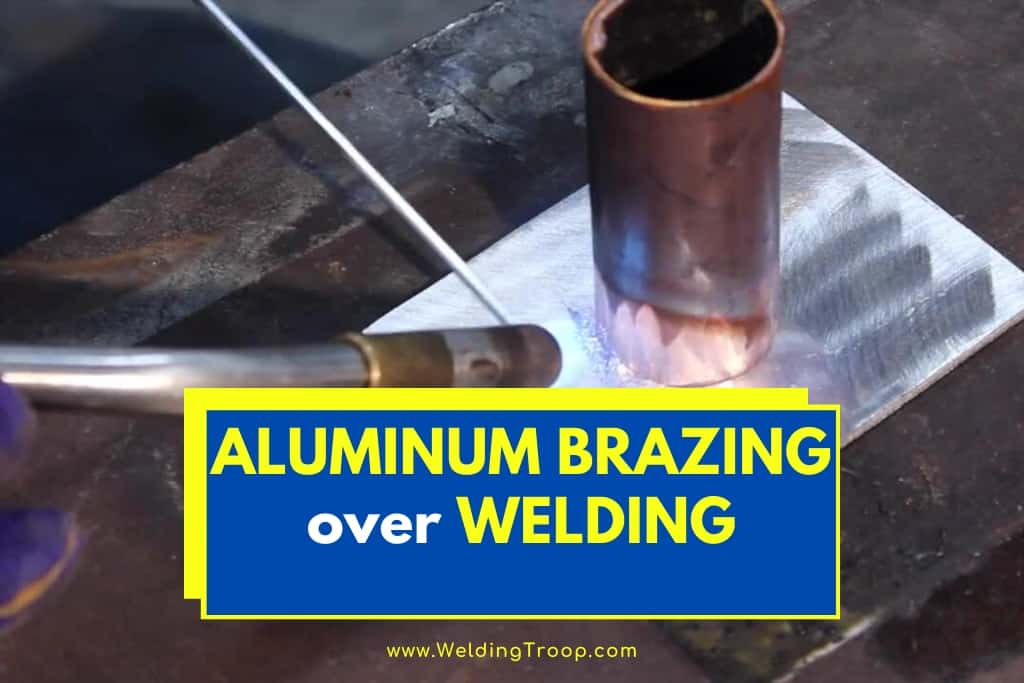Aluminum brazing is a popular metal-joining technique that has several advantages over other forms of welding. Brazing is a form of torchwork that involves joining two pieces of metal with a nonferrous flux using gas that is heated to roughly eight hundred degrees Fahrenheit.
Why choose aluminum brazing over welding? There are many benefits of aluminum brazing that make is a better choice than welding. The advantages of brazing include the following:
- Low cost of entry
- Novice metalworking skill required
- Relatively safe
- Works on a variety of alloys
- Portable and convenient
- Quick repair
- Versatility
If you’ve never considered aluminum brazing as a metalworking technique, it has many excellent characteristics that make it a useful skill. Read on to find out more about how aluminum brazing works and the advantages it has over welding.
Table of Contents
Advantages of Aluminum Brazing
Aluminum brazing offers many advantages over welding and other types of metalworking. Here are some of the benefits of aluminum brazing in comparison to welding:
| Nr. | Benefits of Aluminum brazing |
| 1 | Low cost |
| 2 | Easy to use |
| 3 | Safe practice |
| 4 | works on multiple alloys |
| 5 | smooth process |
| 6 | quick repair |
- Low cost: There are many supplies needed in welding, such as shielding gas, filler wire, and electricity, that aren’t necessary for aluminum torch brazing. This ultimately leads to a much cheaper metalworking experience since the cost of shielding gases like argon and helium are not cheap as far as supplies go.
- Easy use: Unlike TIG welding rigs, which can be somewhat challenging for metalworkers to get a feel for since they involve manipulating a molten weld pool, torch brazing is a relatively uncomplicated process. This makes it an excellent entry-level metalworking skill in comparison to MIG or TIG welding.
- Safe practice: While aluminum brazing still involves high heat that can lead to a burn, aluminum brazing with a gas torch does not require working with high-voltage electricity. This can make it a fantastic method for metalworkers who aren’t comfortable manipulating voltage on a TIG torch.
- Works on multiple alloys: Aluminum brazing works on any alloy of aluminum or cast aluminum, making it a useful technique choice for many different kinds of aluminum-based projects.
- Smooth, good-looking joint: Unlike welding (which can leave a splattered or uneven welding seam if performed by a novice welder), brazing is generally easier to handle and results in a more even bond with less pitting or bumps.
- Quick repair: Aluminum brazing is a much faster metal-joining technique than TIG welding and other forms of welding. Since it has equivalent strength to these other metalworking skills, this makes aluminum brazing a good option for metalworking jobs that must be performed fast or as part of an assembly line.
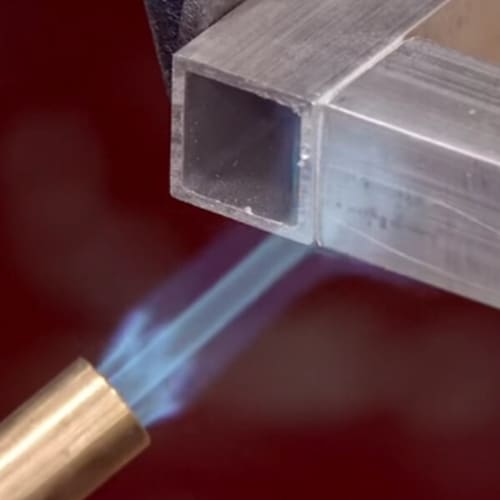
Because it requires few supplies to get started and provides a quality bond with little practice, aluminum brazing can be an excellent jumping-off point for novice metalworkers who are first getting involved in the hobby before they break into buying more expensive welding equipment.
Learning how to work with hot metalworking equipment such as a brazing torch safely can also act as a confidence booster for new metalworkers and an excellent incentive to take on more complex metalworking techniques in future projects.
Permanent Bond
A significant advantage of aluminum brazing is that, like fusion welding, brazing is a great choice for providing a permanent bond between two metal pieces. If brazing is performed correctly, the joint should be just as strong as the two pieces of metal being joined together.
Because it can provide a permanent fusion between pieces of metal as quickly as welding, brazing is a popular technique for metalworking when two pieces must be joined with no loss of tensile strength at the bond.
Best Types of Joints for Aluminum Brazing
Certain types of joints are a better fit for aluminum brazing than TIG welding and other metalworking skills because of the way the joint is designed. The following joints are the best types for aluminum brazing:
- Lap
- Flange
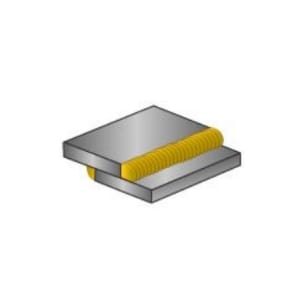
- Tee
- Lock seam
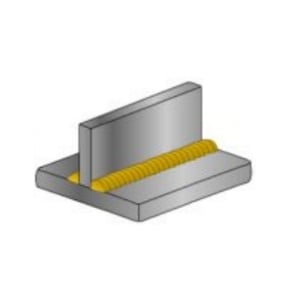
Aluminum brazing is not typically recommended for scarf or butt joints. This is because there is not enough overlap between the two joints to ensure a strong bond. Lap joints are the most common form of aluminum brazed joint.
Suitable Projects for Aluminum Brazing
A major benefit of aluminum brazing is its versatility, especially in home workshop projects where more complicated, expensive, or high-voltage equipment such as TIG welders may not be utilized. Aluminum brazing is especially suitable for automotive repair or custom work.
Here are some of the applications that are a good fit for aluminum brazing:
- Aluminum or cast-iron automotive cylinder heads (engine)
- Lines on automotive A/C systems
- Metal benches
- Automotive fuel tanks
- Automotive wheels/rims
- Aluminum boats
- Bicycle repair
Aluminum brazing has enough potential uses around the home and workshop that it is worth investing in the skill even if you don’t pick up any further techniques in welding. From repairing broken metal patio furniture to creating metal sculpture, there are tons of things you can do once you learn to braze with aluminum.
Is Aluminum Brazing as Strong as Welding?
Aluminum brazing is typically as strong or stronger than welded joints, for several reasons. Here are some of the reasons that aluminum brazing can potentially provide a stronger joint than a weld:
- Lower temperatures: The base metals in an aluminum braze are kept at a lower temperature than the base metals fused in a weld, which allows them to retain the tensile strength of the original material rather than being adversely affected by heat damage.
- Less oxidation: Because aluminum can be brazed at a lower temperature than it can be welded, it is less subject to high-temperature oxidation, porosity issues, and other joint defects that can occur as the result of a high-temperature weld.
- No heat distribution issues: If heat is applied unevenly to an aluminum weld, this can affect the strength of the resulting joint. Since heat is not applied to the base metal in aluminum brazing, this ambient heat issue isn’t a design challenge.
While it is a common misconception that brazing does not provide as strong of a joint as a weld does, this misconception is a myth. The truth is that brazing provides a joint that is at least as strong as the base metals, and even more robust in some designs.
Aluminum Brazing/Welding For Beginners >> Check out the video below
Aluminum Brazing Vs. Welding
There are some unique properties of brazing that make it an excellent skill to pick up as a metalworker. These are the ways that aluminum brazing can be preferable welding:
- Dissimilar metals can be joined: Brazing is the optimal metalworking choice for joining two metals that have very different melting points. Base metals with different melting points are challenging to fuse as a result of that property, so brazing solves the problem by taking the base metals out of the equation.
- Aluminum brazing can join metals and ceramics: Because of the relatively low heat involved, aluminum brazing is one way to incorporate ceramics into metal sculpture or other metalworking projects without damaging the ceramic.
- Brazing maintains dimensions of the finished product: While welding will often distort the dimensions of a finished assembly to account for the weld, brazing allows the filler to be worked down into the joint to provide a smooth finish, minimizing dimensional distortion. For assemblies that require accuracy to within a tenth of a millimeter for engineering success, this kind of precision is crucial.
- Brazing can be used to join thin metal to thick metal: The high heat involved in welding is difficult to use in sheet metals because it’s easy for the welder to burn through the base material accidentally. Aluminum brazing provides an efficient answer to this engineering problem.
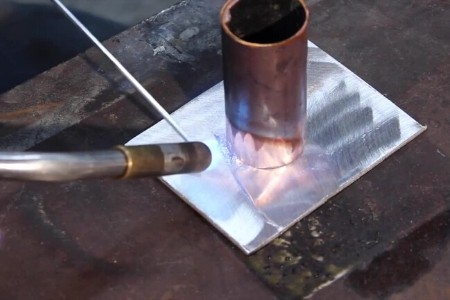
Metalworking is mostly an issue of figuring out what materials can be bonded successfully together without any loss of tensile strength in the resulting joint. Despite the finicky chemical nature of aluminum, its other favorable properties as a metal make it one of the best materials for applied metalworking.
Flux for Aluminum Brazing
Flux is a necessary aspect of brazing with aluminum, just as it’s a necessary aspect of welding with aluminum. This is because, while aluminum in its solid form is light and has strong anti-corrosive properties, it is strongly subject to oxidation when it is melted during the brazing process. This can lead to surface aluminum being converted into aluminum oxide and aluminum nitride.
To prevent this oxidation and contamination from the absorption of atmospheric hydrogen, aluminum filler rods are dipped in brazing flux to act as a chemical shield for the aluminum as it is heated by the brazing torch.
The flux used in aluminum brazing is typically a mixture of sodium and potassium chlorides. Reducing oxidation and atmospheric contamination of the braze is essential to prevent physical defects or strength issues in the joint.
Methods of Brazing Aluminum
There are several different ways that aluminum is used in brazing applications. These are some of the methods used in aluminum brazing:
- Torch aluminum brazing: Torch brazing is the type of aluminum brazing that is most often used by individual metalworkers and is the type of brazing that is most easily used by hobbyists and home artisans.
- Furnace aluminum brazing: Furnace brazing is a brazing process that is more often used in complex manufacturing assemblies since it allows multiple joints on a metal assembly to be joined simultaneously for uniform heat distribution.
- Vacuum aluminum brazing (fluxless brazing): Vacuum aluminum brazing is similar to furnace aluminum brazing in that it involves a furnace rather than a metalworker making individual joints, but it heats the joints in a vacuum-sealed environment that reduces environmental contamination and results in an extremely repeatable assembly.
The fact that brazing aluminum can be used from backyard workshops to manufacturing plants makes it one of the most versatile forms of metalworking in the world.
Supplies for Brazing Aluminum
Compared with other forms of welding, you need relatively few materials to get started in torch brazing aluminum. Here are the supplies you’ll need:
- Base metal pieces
- Aluminum-specific brazing flux
- Aluminum brazing strips
- A brazing torch
- Welding helmet
- Welding gloves
- Welding apron
Along with the necessary materials, you’ll also need a suitable workshop area to undertake brazing activities. The best option is a grounded metal welding bench in a workshop space that is tidy and free of flammable or combustible materials.
Learn More About Welding Safety – Here, you can find an article from our website about Personal Protective Equipment for Welders – PPE | List, and Requirements
When choosing flux and filler, be sure to read the instructions on your chemicals and make sure that you have the appropriate materials for the job. Substituting an improper filler or flux because you can’t spring for the right one is a surefire way to ruin your joint. Remember, in metallurgy, the chemical properties being incorporated are crucial for a successful result.
Tips
Brazing aluminum is one of the more straightforward metalworking activities you can undertake, but there are still a few tricks you can use to make sure that your aluminum brazing project turns out as you intended.
Follow these tips for a successful aluminum braze:
- Provide a clean, oxide-free surface for brazing. Aluminum is highly prone to oxidation and contamination from the atmosphere. This results in a coating of aluminum oxide on the surface of base metals that must be scrubbed away (either manually or chemically) before the braze can be undertaken. This is because the melting point of aluminum oxide is significantly higher than that of pure aluminum.
- Clean the joined assembly after brazing to remove brazing flux. Residual brazing flux can leave the final assembly more prone to corrosion, so be sure to quench the joint in boiling water as soon as the braze is completed. Another option for cleaning finished brazing assemblies other than boiling water is to use a mixture of nitric and hydrofluoric acids.
- Keep your brazing torch low. Aluminum has a low melting point, so a little heat goes a long way. Don’t apply torch heat directly to the joint—instead, allow the natural capillary action of the filler to flow into the joint as a result of the ambient heat of the brazing torch.
- Reduce clearance between the base metals. The tighter your filler is between the two pieces of base metal you’re trying to braze together, the stronger your resulting joint will be.
- Apply uniform heat with your brazing torch. To yield a successful braze, it’s essential to make sure that both pieces of base metal heat up at approximately the same rate to create a strong joint between them.
Brazing aluminum takes some practice, but the more you apply efficient brazing techniques consistently, the better your resulting joints will become. Like most technical skills, metalworking is something that you become steadily more proficient at the more you apply it.
Safety
Brazing is generally considered a safe form of metalworking, but there are still a few safety risks to consider using this technique. Safety considerations aren’t just crucial for avoiding personal injury while metalworking, they are also important at the manufacturing level to prevent lost productivity, OSHA fines, and worker compensation claims.
Here are some safety tips for working with brazed aluminum:
- Always use personal protective equipment (PPE): For metalworking activities such as brazing, that means welding goggles, a welding helmet, and welding gloves. While brazed metalworking applications don’t tend to spatter like a weld, they still involve temperatures that can badly burn unprotected skin.
- Always be aware of the chemical properties of your materials: Knowing what metals you’re working with can make you more aware of what kind of noxious fumes might be outgassed as the result of high-temperature heat application. Make sure all base metal pieces are completely clean to rule out unknown contaminants that might be toxic if inhaled as an aerosol.
- Always work in a well-ventilated area: The significant health risk for metalworkers aside from burns is respiratory damage from dangerous fumes that are a by-product of metalworking techniques. Being sure to always braze with ventilation can prevent these fumes from being inhaled.
- Always install smoke and carbon monoxide detectors: No matter what kind of crafting activities go on in your shop, you need to make sure that the shop is protected against the effects of combustion or potential electrical fires.
Brazing involves much lower temperatures than other forms of welding and no high voltage. This makes it a much safer technique to use for metalworking than TIG welding.
However, that does not mean that you can be complacent when working with a brazing project. Six hundred degrees is still six hundred degrees, and a third-degree burn will hurt just as bad no matter whether you get it from a gas torch or a TIG torch.
Conclusion
Brazing aluminum can be a terrific choice for a wide array of metalworking projects. Since aluminum is so vulnerable to higher temperatures, using a lower-temperature metalworking technique with it can prevent many of the problems associated with aluminum metalworking, such as oxidation and distortion.
If you’re new to the metal shop, learning how to braze with aluminum can be a great way to dip your toes into the world of metalworking.
Sources:
app.aws.org/wj/2000/09/0015/
californiabrazing.com/vacuum-aluminum-brazing-what-matters-most/
superiorflux.com/aluminum-flux/
Recommended Reading
Can You Weld Over a Braze? 4 Reasons Why You Shouldn’t
What’s the Difference Between Soldering Brazing and Welding? | When To Use?

